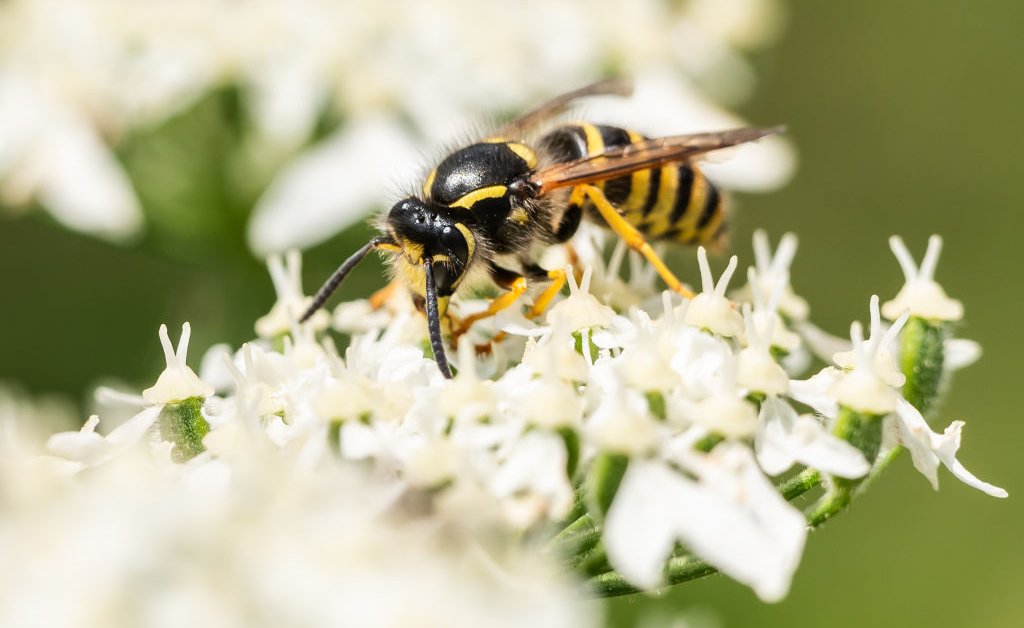The Impact Of Climate Change On Summertime Insect Activity

Welcome to your ultimate source for breaking news, trending updates, and in-depth stories from around the world. Whether it's politics, technology, entertainment, sports, or lifestyle, we bring you real-time updates that keep you informed and ahead of the curve.
Our team works tirelessly to ensure you never miss a moment. From the latest developments in global events to the most talked-about topics on social media, our news platform is designed to deliver accurate and timely information, all in one place.
Stay in the know and join thousands of readers who trust us for reliable, up-to-date content. Explore our expertly curated articles and dive deeper into the stories that matter to you. Visit Best Website now and be part of the conversation. Don't miss out on the headlines that shape our world!
Table of Contents
The Buzz is Changing: How Climate Change is Altering Summertime Insect Activity
Summertime: a season typically brimming with the buzzing of bees, the chirping of crickets, and the occasional unwelcome mosquito bite. But climate change is disrupting this familiar soundtrack, significantly impacting insect activity and potentially triggering cascading effects on ecosystems and human society. The implications are far-reaching, and understanding these changes is crucial for mitigating future impacts.
Rising Temperatures and Shifting Seasons:
One of the most prominent effects of climate change on insect activity is the alteration of seasonal patterns. Warmer temperatures are causing insects to emerge earlier in the spring and extend their activity later into the autumn. This phenological mismatch can disrupt the delicate balance of predator-prey relationships. For example, if birds rely on insect emergence to feed their young, an earlier insect emergence might leave them without sufficient food.
This extended season also means longer periods of insect-borne disease transmission. Mosquitoes, ticks, and other disease vectors are expanding their geographic ranges and activity periods, increasing the risk of diseases like Lyme disease, West Nile virus, and Zika virus. Understanding these shifts is critical for public health planning and disease prevention strategies.
Changes in Insect Abundance and Distribution:
Climate change isn't just affecting when insects are active, but also how many are present and where they're found. Some species are thriving in warmer conditions, while others are struggling to adapt. This uneven impact is reshaping insect communities, potentially leading to a loss of biodiversity. For instance, studies have shown declines in butterfly populations in certain regions due to habitat loss and changing climate conditions. The consequences of such biodiversity loss ripple through the entire ecosystem.
- Impacts on Pollination: The decline of pollinators like bees, butterflies, and moths poses a significant threat to agriculture and food security. Many crops rely on insect pollination, and a decrease in pollinator populations could lead to reduced crop yields.
- Impacts on Food Webs: Insects form the base of many food webs. Changes in insect abundance and distribution can have significant knock-on effects on other animals, including birds, amphibians, and mammals that rely on insects as a food source.
Extreme Weather Events and Insect Populations:
Extreme weather events, becoming increasingly frequent and intense due to climate change, also heavily influence insect populations. Droughts can drastically reduce insect populations, while intense rainfall and flooding can disrupt their habitats and breeding cycles. Wildfires, another consequence of climate change, can decimate insect populations and their habitats, leading to long-term ecological damage.
What Can We Do?
Addressing the impact of climate change on insect activity requires a multifaceted approach:
- Reducing Greenhouse Gas Emissions: This is the most crucial step in mitigating climate change and its effects on insect populations.
- Protecting and Restoring Habitats: Creating and maintaining diverse habitats is essential for supporting insect populations and biodiversity.
- Promoting Sustainable Agriculture: Reducing pesticide use and promoting sustainable farming practices can help protect beneficial insects.
- Supporting Research and Monitoring: Continued research and monitoring of insect populations are crucial for understanding the impacts of climate change and developing effective mitigation strategies.
The changes in summertime insect activity are a stark reminder of the far-reaching consequences of climate change. By understanding these impacts and taking proactive steps, we can work towards preserving the crucial role insects play in our ecosystems and ensuring a healthier planet for future generations. Learn more about climate change impacts and how you can contribute to solutions by visiting [link to a reputable environmental organization's website].

Thank you for visiting our website, your trusted source for the latest updates and in-depth coverage on The Impact Of Climate Change On Summertime Insect Activity. We're committed to keeping you informed with timely and accurate information to meet your curiosity and needs.
If you have any questions, suggestions, or feedback, we'd love to hear from you. Your insights are valuable to us and help us improve to serve you better. Feel free to reach out through our contact page.
Don't forget to bookmark our website and check back regularly for the latest headlines and trending topics. See you next time, and thank you for being part of our growing community!
Featured Posts
-
 Conquer Wordle 1433 Hints And Answer May 22nd
May 23, 2025
Conquer Wordle 1433 Hints And Answer May 22nd
May 23, 2025 -
 Pedro Pascals Pride And Prejudice Reference A Chris Evans Fan Favorite
May 23, 2025
Pedro Pascals Pride And Prejudice Reference A Chris Evans Fan Favorite
May 23, 2025 -
 Could South Parks Move To A New Streamer Result In Episode Bans
May 23, 2025
Could South Parks Move To A New Streamer Result In Episode Bans
May 23, 2025 -
 Mickey 17 Streaming Release Date Confirmed When And Where To Watch
May 23, 2025
Mickey 17 Streaming Release Date Confirmed When And Where To Watch
May 23, 2025 -
 Is South Park Leaving Hbo Max Paramount Streaming Rights Explained
May 23, 2025
Is South Park Leaving Hbo Max Paramount Streaming Rights Explained
May 23, 2025
